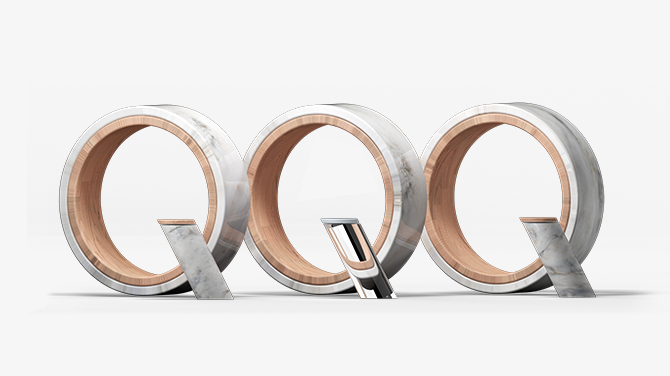
Invesco ETFs
Explore our lineup of ETFs and see how they can be cost effective, tax-efficient tools for maximizing investments and building long-term wealth.
Innovation Suite gives investors access to the most groundbreaking companies within the Nasdaq indices as they pursue financial growth. This access allows investors to be at the forefront of innovation, reach attractive values, and diversify their portfolios.
transcript
Hi, I’m Ryan McCormack, Invesco Senior Factor & Core Equity Strategist, here to discuss Invesco’s QQQ Innovation Suite.
You may be familiar with Invesco QQQ, which is an exchange-traded fund, or ETF, that tracks the Nasdaq-100 and provides exposure to companies at the forefront of innovation across a diverse range of sectors.
QQQ ETF launched in 1999, establishing the standard for investing in innovation, making this year the 25th Anniversary.
The Nasdaq 100 Index is made up of the 100 largest companies listed on the Nasdaq Exchange, ex-Financials.
And though many of the companies are technology-focused, the Nasdaq-100 encompasses many different industries, including big names you may know with products you use every day.
Invesco’s QQQ Innovation Suite, offers investors access to groundbreaking companies on the Nasdaq Indices, at an attractive value.
Whether you are seeking an allocation to the largest Nasdaq companies, or the next tier in terms of size, Innovation Suite offers potential solutions and optionality across: Invesco Nasdaq 100 ETF, QQQM, Invesco Nasdaq Next Gen 100 ETF, QQQJ, and Invesco Nasdaq Future Gen 200 ETF, QQQS.
Rethink possibility and explore potential ways to implement innovation and growth into your portfolio.
Consider (1) enhancing your core exposure within large-cap, mid-cap, or small-cap growth equity investments, (2) complementing your value equity strategies, or (3) replacing high-fee, underperforming active strategies to maximize replacement potential.
Find the right solution for your portfolio with Invesco’s QQQ Innovation Suite.
Ryan McCormack explores potential ways to implement innovation and growth into your portfolio with Innovation Suite. These solutions include enhancing core exposure within large-cap, mid-cap, or small-cap growth equity investments, complementing value equity strategies, and replacing high fee, underperforming active strategies to maximize replacement potential.1
| Fund | Ticker | Expense ratio | Underlying index | Download |
|---|---|---|---|---|
| Invesco QQQ | QQQ | 0.20% | Nasdaq 100 Index | Fact sheet |
| Invesco Nasdaq 100 ETF | QQQM | 0.15% | Nasdaq 100 Index | Fact sheet |
| Invesco Nasdaq Next Gen 100 ETF | QQQJ | 0.15% | Nasdaq Next Generation 100 Index | Fact sheet |
| Invesco Nasdaq Future Gen 200 ETF | QQQS | 0.20% | Nasdaq Innovators Completion Cap Index | Fact sheet |
| Invesco ESG Nasdaq 100 ETF | QQMG | 0.20% | Nasdaq 100 ESG Index | Fact sheet |
| Invesco ESG Nasdaq Next Gen 100 ETF | QQJG | 0.20% | Nasdaq Next Generation 100 ESG Index | Fact sheet |
| Invesco Nasdaq 100 Index Fund¹ | IVNQX | 0.30%* | Nasdaq 100 Index | Fact sheet |
* Gross Expense Ratio 5.31%
The Nasdaq-100 Index has provided investors with decades of strong large-cap performance. The chart below shows the total cumulative returns from March 10, 1999–Dec. 31, 2023.
Source: Bloomberg L.P. Data is for total returns from March 10, 1999–December 31, 2023. The above chart is presented for the purpose of illustrating the long-term performance of large-cap growth markets versus the broader market over time. The starting time period was selected based on the inception of the oldest product in the Invesco QQQ Innovation Suite. QQQ has an existing performance record, which can be found here. Index performance is not indicative of Fund performance, nor is it an indication of how a Fund could or will perform. An investment cannot be made directly into an Index. Past performance is not a guarantee of future results.
The index includes the largest 100 non-financial companies listed on the Nasdaq Stock Market based on market capitalization. It rebalances quarterly and is reconstituted annually in early December.
QQQM can be used for US large-cap growth equity exposure in portfolios by accessing innovative companies with sound fundamentals that help drive global growth.
QQQJ provides exposure to growth-focused, Nasdaq-listed companies that may be earlier in their growth cycles than larger companies in the Nasdaq-100 Index.
QQQS can be used as a small-cap core holding that focuses on firms with growth potential as measured by the value of their patents.
Investors can get ETF exposure to some of the world’s most innovative companies across the market-cap spectrum with no overlap between strategies. ETFs in our Invesco QQQ Innovation Suite can be used to complement each other.

Invesco ETFs
Explore our lineup of ETFs and see how they can be cost effective, tax-efficient tools for maximizing investments and building long-term wealth.

ETF insights and resources
Access our latest insights on investment opportunities and ways to use ETFs in your portfolio.

Discover innovation with QQQ
Learn how Invesco QQQ gives investors access to some of today's most innovative companies, all in one exchange-traded fund (ETF).
There are risks involved with investing in ETFs, including possible loss of money. Index-based ETFs are not actively managed. Actively managed ETFs do not necessarily seek to replicate the performance of a specified index. Both index-based and actively managed ETFs are subject to risks similar to stocks, including those related to short selling and margin maintenance. Ordinary brokerage commissions apply. The Fund's return may not match the return of the Index. The Funds are subject to certain other risks. Please see the current prospectus for more information regarding the risk associated with an investment in the Funds.
Controversy Rating score: The rating ranges from Category 1 (low impact) to Category 5 (severe impact), depending on the reputation risk to the company and potential impact on stakeholders. Sustainalytics, a globally recognized independent provider of ESG research, ratings, and data, will identify incidents and events via a daily monitoring system and will give a Controversy Rating score.
The ESG Risk Rating score- It’s provided by Sustainalytics and is designed to measure the magnitude of a company’s unmanaged ESG risk. Companies are assigned risk scores ranging from 0 (indicating that ESG risks have been fully managed) to 100 (indicating the highest level of unmanaged ESG risk), and the index provider excludes companies with an ESG Risk Rating of 40 or higher (i.e., a “severe risk” rating) from the underlying index.
NA3472766
ETFs
There are risks involved with investing in ETFs, including possible loss of money. Shares are not actively managed and are subject to risks similar to those of stocks, including those regarding short selling and margin maintenance requirements. Ordinary brokerage commissions apply. The Fund’s return may not match the return of the Underlying Index. The Fund is subject to certain other risks. Please see the current prospectus for more information regarding the risk associated with an investment in the Fund.
Investments focused in a particular sector, such as information technology, are subject to greater risk, and are more greatly impacted by market volatility, than more diversified investments.
QQMG & QQJG
Stocks of companies with favorable ESG attributes may underperform the market as a whole. As a result, the Fund may underperform other funds that do not screen companies based on ESG attributes. The criteria used to select companies for investment may result in the Fund investing in securities, industries or sectors that underperform the market as a whole or underperform other funds screened for ESG standards. The Fund is non-diversified and may experience greater volatility than a more diversified investment. The risks of investing in securities of foreign issuers can include fluctuations in foreign currencies, political and economic instability, and foreign taxation issues.
QQQM & QQQJ
The risks of investing in securities of foreign issuers can include fluctuations in foreign currencies, political and economic instability, and foreign taxation issues.
The Fund is non-diversified and may experience greater volatility than a more diversified investment.
QQQS
Stocks of small and mid-sized companies tend to be more vulnerable to adverse developments, may be more volatile, and may be illiquid or restricted as to resale.
Invesco is not affiliated with IPR Strategies
Nasdaq Innovators Completion Cap Index seeks to hold the small cap companies with the highest patent value relative to market cap in the Nasdaq Composite Index.
The Fund’s Underlying Index (Index) is composed of companies with valuable portfolios of patents. The Index Provider relies on an independent data provider to ascertain the potential value of an issuer’s patents and related intangible assets (i.e., intellectual property and research & development activities) for inclusion in the Index. The Fund’s performance may suffer if the data provider’s does not correctly value an issuer’s patents or if the companies included in the Index ultimately do not benefit from holding such patents. There is no guarantee that the Index will be composed of companies with the most valuable patents.
QQQJ
Stocks of medium-sized companies tend to be more vulnerable to adverse developments, may be more volatile, and may be illiquid or restricted as to resale.
Invesco NASDAQ 100 Index Fund:
In general, stock values fluctuate, sometimes widely, in response to activities specific to the company as well as general market, economic and political conditions.
Derivatives may be more volatile and less liquid than traditional investments and are subject to market, interest rate, credit, leverage, counterparty and management risks. An investment in a derivative could lose more than the cash amount invested.
The Fund may become “non-diversified,” as defined under the Investment Company Act of 1940, as amended, solely as a result of a change in relative market capitalization or index weighting of one or more constituents of the Index. Shareholder approval will not be sought when the Fund crosses from diversified to non-diversified status under such circumstances.
Investments focused in a particular sector, such as technology, are subject to greater risk, and are more greatly impacted by market volatility, than more diversified investments.
The risks of investing in securities of foreign issuers can include fluctuations in foreign currencies, political and economic instability, and foreign taxation issues.
Unlike many investment companies, the Fund does not utilize an investing strategy that seeks returns in excess of its Underlying Index. Therefore, the Fund would not necessarily buy or sell a security unless that security is added or removed, respectively, from its Underlying Index, even if that security generally is underperforming.
The NASDAQ-100 Index is comprised of 100 of the largest non-financial companies on the Nasdaq.
The NASDAQ Next Generation 100 Index is comprised of the next generation of non-financial companies on Nasdaq; that is, the largest 100 companies outside of the NASDAQ-100 Index.
The Russell 1000® Growth Index measures the performance of the largecap growth segment of the US equity universe.
An investor cannot invest directly in an index. The results assume that no cash was added to or assets withdrawn from an Index. Index returns do not represent Fund returns. The Index does not charge management fees or brokerage expenses, nor does the Index lend securities, and no revenues from securities lending were added to the performance shown.
The sponsor of the Nasdaq-100 TrustSM, a unit investment trust, is Invesco Capital Management LLC (Invesco). NASDAQ, Nasdaq-100 Index, Nasdaq-100 Index Tracking Stock and QQQ are trade/service marks of The Nasdaq Stock Market, Inc. and have been licensed for use by Invesco, QQQ's sponsor. NASDAQ makes no representation regarding the advisability of investing in QQQ and makes no warranty and bears no liability with respect to QQQ, the Nasdaq-100 Index, its use or any data included therein.
The Invesco NASDAQ 100 ETF is not sponsored, endorsed, sold or promoted by the NASDAQ OMX Group, Inc. or its affiliates (NASDAQ OMX, with its affiliates, are referred to as the "Corporations"). The Corporations have no liability in connection with the administration, marketing or trading of the Invesco NASDAQ QQQ ETF. "NASDAQ®" is a registered trademark and is used under license.
The Invesco NASDAQ Next Gen 100 ETF is not sponsored, endorsed, sold or promoted by the NASDAQ OMX Group, Inc. or its affiliates (NASDAQ OMX, with its affiliates, are referred to as the "Corporations"). The Corporations have no liability in connection with the administration, marketing or trading of the Invesco NASDAQ Next Gen 100 ETF. "NASDAQ®" is a registered trademark and is used under license.
The Invesco NASDAQ 100 Index Fund is not sponsored, endorsed, sold or promoted by the NASDAQ OMX Group, Inc. or its affiliates (NASDAQ OMX, with its affiliates, are referred to as the "Corporations"). The Corporations have no liability in connection with the administration, marketing or trading of the Invesco NASDAQ 100 Index Fund. "NASDAQ®" is a registered trademark and is used under license.
The Nasdaq-100 ESG Index is designed to measure the performance of companies included in the Nasdaq-100 Index that also meet environmental, social and governance ("ESG”) criteria. To satisfy the ESG criteria, an issuer must not be involved in certain specific business activities, such as alcohol, cannabis, controversial weapons, gambling, military weapons, nuclear power, oil & gas, and tobacco. Additionally, an issuer must be deemed compliant with the United Nations Global Compact principles, meet business controversy level requirements, and have an ESG Risk Rating Score that meets the requirements for inclusion in the Index.
The Nasdaq Next Generation 100 ESG Index is designed to measure the performance of companies included in the Nasdaq Next Generation 100 Index that also meet environmental, social and governance ("ESG”) criteria. To satisfy the ESG criteria, an issuer must not be involved in certain specific business activities, such as alcohol, cannabis, controversial weapons, gambling, military weapons, nuclear power, oil & gas, and tobacco. Additionally, an issuer must be deemed compliant with the United Nations Global Compact principles, meet business controversy level requirements, and have an ESG Risk Rating Score that meets the requirements for inclusion in the Index.
The Underlying Index reflects information developed by Sustainalytics, an independent provider of ESG research, ratings, and data for the Underlying Index. Such information and data are proprietary of Sustainalytics and/or its third-party suppliers and are provided only in connection with the Underlying Index. They do not constitute an endorsement of any product or project, are not investment advice and are not warranted to be complete, timely, accurate or suitable for a particular purpose. Sustainalytics has no liability for the construction or administration of the Underlying Index and has no liability in connection with the administration, marketing or trading of the Fund.
Invesco Distributors, Inc. is not affiliated with Nasdaq
Since ordinary brokerage commissions apply for each buy and sell transaction, frequent trading activity may increase the cost of ETFs.
Investors should be aware of the material differences between mutual funds and ETFs. ETFs generally have lower expenses than actively managed mutual funds due to their different management styles. Most ETFs are passively managed and are structured to track an index, whereas many mutual funds are actively managed and thus have higher management fees. Unlike ETFs, actively managed mutual funds have the ability react to market changes and the potential to outperform a stated benchmark. Since ordinary brokerage commissions apply for each ETF buy and sell transaction, frequent trading activity may increase the cost of ETFs. ETFs can be traded throughout the day, whereas, mutual funds are traded only once a day. While extreme market conditions could result in illiquidity for ETFs. Typically they are still more liquid than most traditional mutual funds because they trade on exchanges. Unit trusts have a stated expiration date based on what investment in the portfolio and generally make one public offering of a fixed number of units. In some cases, a secondary market is maintained allowing existing unit holders to sell their units and for new investors to buy units. Investors should talk with their financial professional regarding their situation before investing.
This link takes you to a site not affiliated with Invesco. The site is for informational purposes only. Invesco does not guarantee nor take any responsibility for any of the content.